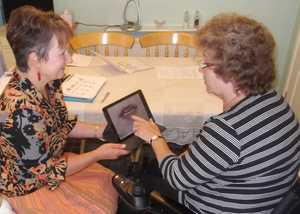Therapy
What I can offer
My practice is based near the Devon and Somerset border in South West England, providing teletherapy (and home visits in some circumstances):
- Assessments, short courses, training and signposting, intensives, mentoring, review, support.
- Liaison with others according to your requirements including family, friends, other professionals.
- Training for professionals and those in client support networks
- Expert advice on communication and swallowing disorders.
Teletherapy
I use telehealth (videoconferencing, also called teletherapy) following the COVID-19 pandemic, with good results.
When face-to-face contact is difficult, teletherapy is the next best thing. In some cases, it may even be easier than a clinic visit!
I support clients and the people in their support network, for assessment, advice and therapy. We agree bespoke intervention plans based on evidence-based practice, according to individual requirements. Clients come with a whole range of issues, including stroke, head injury or neurological change, but of course everyone is different.
Most of my work is via Zoom. We can start with a simple phone-call and email to set things up. You don’t need prior experience of Zoom, just email access, a computer or laptop screen large enough for you to see easily, and a quiet, private, well-lit place to have the appointment.
I use a system which allows you to view two channels at once:
- see me in real time over a video call (such as Zoom on your PC)
- see a live feed of resources (e.g. using an iPad for practice and communication)

This system works like showing resources to a client in the clinic. If you are new to teletherapy it takes a little while to adjust. For example, eye contact is less natural in a video call.
Using video calls I can help clients setting up Apps at home for practice. I can also demonstrate and support clients with exercises and practical resources for communication.
Do complete the contact form if you are interested. I will try to accommodate your needs.
I’ve captured a still of what it might look like. You can see me pointing to the words and waving at the same time.
Below I am working face-to-face in a client visit before the COVID-19 pandemic. Similar techniques can work via teletherapy.




